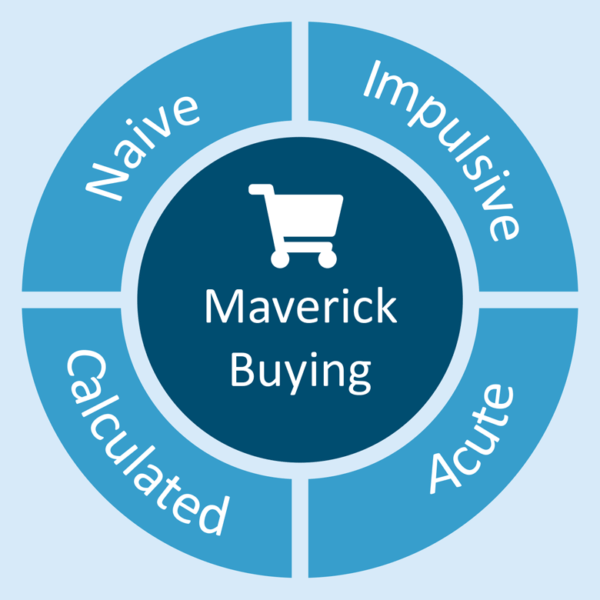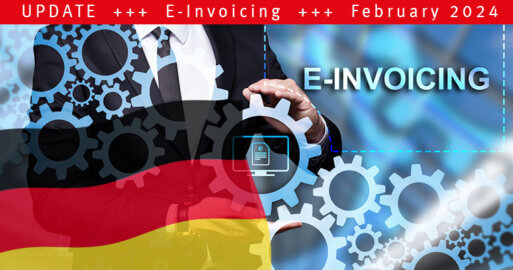Maverick Buying – Anarchy in Purchasing

Have you ever heard of maverick buying? This term actually comes from the Wild West. Its namesake is the Texas cattleman Samuel A. Maverick (1803 – 1870). Unlike other breeders of his time, he did not brand his cattle. Ever since then, calves without a brand mark have been known as “mavericks” in English.[1] These days, the term maverick is also used for outsiders, rebels and non-conformists. In relation to purchasing, maverick buying describes unauthorised purchasing initiated by a department, instead of ordering through their company’s established channels. There are many reasons why this happens, as well as solutions.
Doesn’t maverick buying sound cool? It conjures up images of a lone cowboy, wild, unfettered & free, and answerable at most to the laws of the prairie. Purchasing, however, is not the Wild West, because the procurement process is a complex web of negotiations, agreements, security measures, risk management and budget restrictions. This sophisticated network has been created by experts with a great deal of effort and dedication over a long period of time, with a strong awareness of what is best for the company as a whole.
Why does maverick buying happen?
So what drives someone to bypass his company’s established procurement process and act on his own authority – often with no regard for the consequences? Steffen Eschinger from Haufe Verlag has compiled a few reasons:
- Employees don’t trust the purchasing department.
- Employees are not aware of agreements with suppliers.
- Those using the goods or services want a particular suppliers to look favourably upon them.
- Employees consider another supplier’s products to be superior.
- Employees consider certain framework conditions to be unfavourable because they can’t see the big picture.
- There’s no incentive to keep to framework contracts.
- Employees only consider the unit or cost price, without considering any follow-on costs.
- The purchasing department and the employees who need the items have different interests at heart.
- Perceived incompetence or power struggles.
- There is doubt over the ability or quality offered by a preferred partner
- Corruption and bribery.[2]
In our 35 years of experience working on projects for clients, we have found that the reasons behind maverick buying tend to fall into four main categories:
Four reasons behind maverick buying
- Naive maverick buying
An employee isn’t aware of his company’s procurement process, so acts as he sees fit. - Impulsive maverick buying
An employee is fully aware that he is disregarding protocol, yet believes that his company won’t suffer or be disadvantaged by this. - Calculated maverick buying
An employee or department has consciously decided to bypass the official procurement channels and agreements. He accepts that this may be detrimental or even damaging to the company. - Panic maverick buying
There is an urgent reason to bypass the established procurement process, for example to quickly acquire products or services that are not yet well represented in the purchasing process.

What impact does maverick buying have on a company?
Companies tend to quietly tolerate these four types of maverick buying. However, research by a Leipzig university suggests that in many organisations, maverick buying affects over 25% of purchases.[3] This would mean that:
- One in four invoices paid by a company do not go through the central purchasing office and do not have a corresponding purchase order in the company’s ERP system
It’s clear that this sort of buying behaviour is going to negatively affect a company, regardless of the intentions behind it. In an article on maverick buying and its significance for purchasing[4], Peter Pruetting names some of these consequences. We have shared these thoughts and added to them in the following list:
- An increase in costs as this makes extra work for those in accounts, purchasing and checking incoming goods.
- The purchasing department cannot take these goods into account when renegotiating contracts with suppliers.
- As the central purchasing department has no way of gauging the true demand for an item, they can’t reflect this in the conditions they negotiate with suppliers.
- You may run into problems if you have quality problems with these items, as this hasn’t been professionally negotiated and set down in a contract. This is especially true if ordering from outside your own country, where other laws may apply.
- You will not be protected by the risk management measures in central purchasing.
- Having a large number of suppliers increases both admin and costs.
- It becomes more difficult to keep track of costs.
We also shouldn’t forget the significantly negative impact that maverick buying can have on a company’s pricing. After all, a good purchaser is a good negotiator. The terms and conditions in framework agreements with suppliers have usually been rigorously negotiated and are based on aspects such as clearly defined purchase quantities. The difference between a negotiated and non-negotiated price can be massive. And this means that maverick buying can therefore be really expensive for a company.
How can you stop maverick buying?
You will only be able to stop orders bypassing the purchasing department if you have clear, binding rules and an IT-supported procurement process. However, for these to be successful, you first need to make your purchasing processes transparent and easy to understand.
In our experience, companies have been able to successfully combat maverick buying with the following measures:
- Clearly communicate processes and responsibilities
Communicate how the procurement process works in your company to all your employees using a range of communication channels. These could include presentations when onboarding new staff, clear directions published on your intranet and updates or reminders by e-mail. You need your managers on board to lead from the top and guide their employees towards the official channels. - Clearly communicate the consequences of maverick buying
It is not enough to clearly explain a process to your employees. To help them want to comply, they need to understand the consequences of not doing so. First and foremost, each employee should be aware of how any unauthorized purchases they make would impact the company as a whole. You then need to clearly communicate the personal consequences for any individual breaking the rules – up to and including a warning and immediate dismissal. - An easy, automated purchasing system make maverick buying unnecessary
The best way to stop maverick buying is to make the procurement process as simple as possible. This is where digitalisation can help you by reducing the workload and complexity for all sides. Digitally transforming your purchase to pay process involves digitalising the following stages:- purchase orders
- orders
- incoming goods
- invoicing
SEEBURGER can help you automate your processes, with workflow management and approval solutions, combined with our successful purchase-to-pay solution.
There are several advantages to fully digitalising your procurement process:
- Quicker purchase-to-pay – get your items quicker
- Ensure people keep to the process and only act within their area of responsibility
- Keep better track of orders
- Better spend management
- Fewer errors through little or no manual intervention in the process.
Banish maverick buying with digital procurement solutions from SEEBURGER
SEEBURGER has a range of workflow-supported procurement solutions to integrate straight into SAP. These digitally capture, check, approve and process purchase orders and orders. It’s even possible to fully automate bookkeeping for invoices with a corresponding purchase order and goods receipt. This makes the entire purchase-to-pay process significantly more efficient and faster, as manual intervention is rarely necessary. And that saves your organisation a huge amount of time and money.
Tame the Wild West mentality in your company by digitalising your procurement process. And tell maverick buying to get outta town!
[1] cf. Wikipedia: Samuel Maverick (accessed 29th November 2021)
[2] Cf. Haufe Verlag – Maverick Buying: Compliance-Verstoß im Beschaffungsprozess / 2 Ursachen für Maverick Buying [Maverick Buying: Non-Compliance with the Procurement Process/ 2 Reasons for Maverick Buying](accessed 18th November 2021)
[3] cf. Mittelstand Heute – So einfach setzen Sie standardisierte Einkaufsprozesse um [This is How Easy It Is To Adopt Standardised Processes](accessed 18th November 2021)
[4] cf. Windmühlenbauer – Was ist Maverick-Buying und welche Bedeutung hat es für den Einkauf? [What is Maverick Buying and What Does It Mean For Purchasing?] (accessed 18th November 2021)
Thank you for your message
We appreciate your interest in SEEBURGER
Get in contact with us:
Please enter details about your project in the message section so we can direct your inquiry to the right consultant.
Written by: Rolf Holicki
Rolf Holicki, Director BU E-Invoicing, SAP&Web Process, is responsible for the SAP/WEB applications and digitization expert. He has more than 25 years of experience in e-invoicing, SAP, Workflow and business process automation. Rolf Holicki has been with SEEBURGER since 2005.





